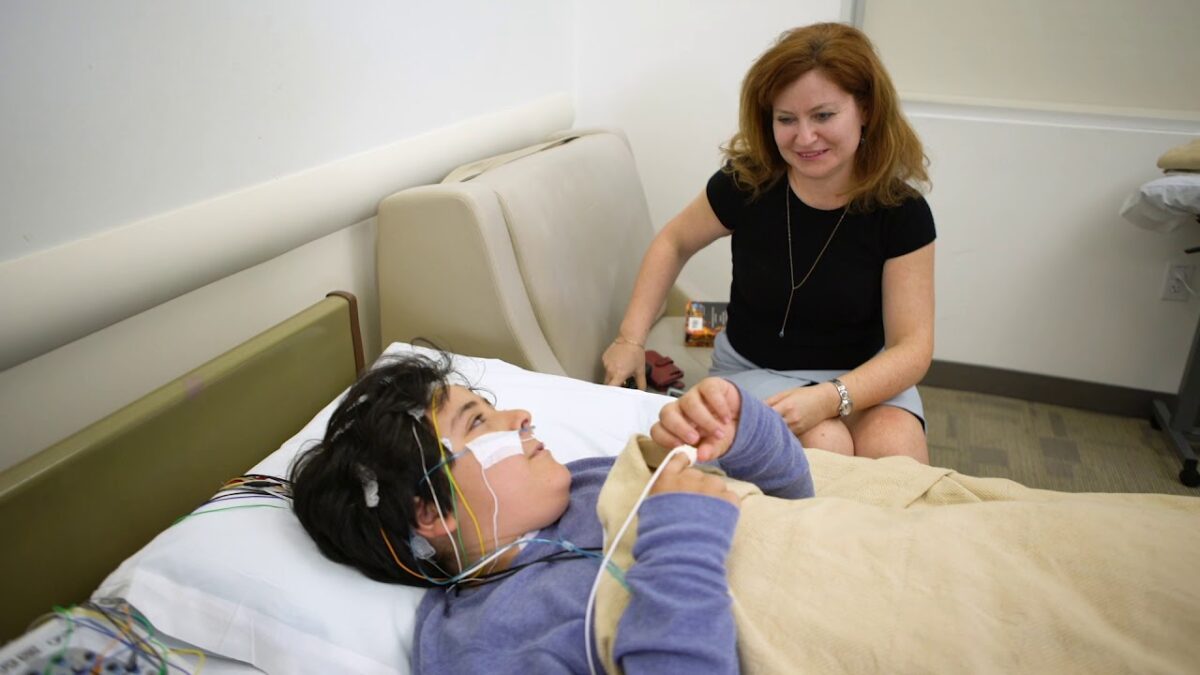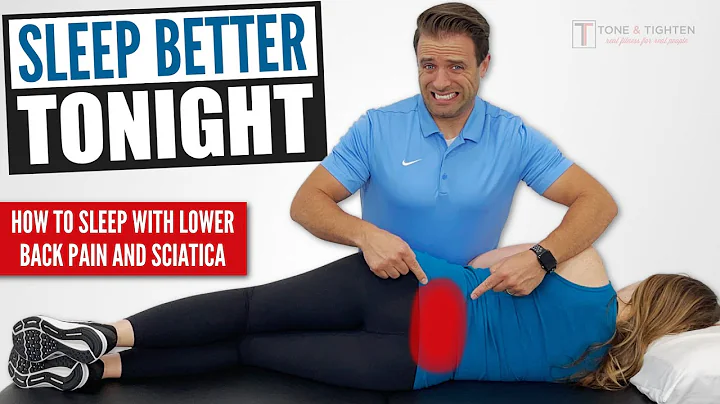How to sleep with lower back pain?
One way to get a good night’s sleep with lower back pain is to find a comfortable position to sleep in. You can prop up your spine by placing a pillow or rolled towel under the areas that feel the most strain. This will help provide more support while you sleep and reduce pain in the morning. Changing your sleeping position can also help alleviate apnea. However, sleeping on your stomach can exacerbate your condition.
Side sleeping positions relieve back pain
Changing your sleeping position is one of the best ways to relieve lower back pain. This position helps to open the space between spinal vertebrae and decreases the strain on the discs. It also helps to prevent the spine from curving backward while you sleep. It can also improve your sleep quality and mood.
One of the best positions to relieve lower back pain is to sleep on your side. This position allows you to have the best spinal alignment and distribute your weight evenly. It is especially beneficial for patients with degenerative disc disease. You don’t have to add pillows to this position and you can sleep on your side with your knees slightly bent.
In addition to sleeping on your side, you can also sleep in the fetal position. This position opens the space between your vertebrae and allows you to feel comfortable. You can also use a pillow under your knees to help you stay in alignment and relieve pressure. You can also use a head pillow for extra support.
Another good position for relieving lower back pain is sleeping on your side with a pillow between your knees. This position helps maintain the neutral spinal alignment and may also help with disc herniation. It also opens the disc spaces between the vertebrae and relieves pressure on the affected nerve.
Sleeping on your stomach can aggravate sleep apnea
Sleeping on your stomach can aggravate both lower back pain and sleep apnea. Sleeping on your stomach causes the spine to sink under your belly, creating additional pressure. This puts extra stress on the surrounding muscles and joints and can cause pain and stiffness in the back, neck, and shoulders. It’s also very hard to breathe and may contribute to other health problems.
Some sleep experts recommend sleeping on your side or back to prevent lower back pain and sleep apnea. If you’re not sure about this, it’s best to consult a physician. This professional will be able to give you personalized guidance that will help you sleep on your side or back.
In addition to aggravated lower back pain and sleep apnea, sleeping on your stomach can also lead to neck problems. For example, stomach sleeping can lead to a herniated disk, which is a ruptured gelatinous disk between vertebrae. It can also cause nerves to irritate.
When it comes to your back and neck, sleeping on your side is the most beneficial for your health. Besides reducing back and neck pain, sleeping on your side will also improve your spinal alignment.
Placing a pillow between your knees
Placing a pillow between your knee and lower back when you sleep may help ease your lower back pain. Sleeping on your side can also help your back because it allows your spine to be aligned. A supportive mattress is also important to support the back.
While sleeping on your side can be uncomfortable, it can also cause your spine to sag. Placing a pillow between your knee and lower back can help alleviate this pain by keeping your knees and hips in a neutral position. This can be very helpful for those who experience chronic lower back pain.
A good knee pillow can also help you to prevent varicose veins, which are unsightly and uncomfortable. This pillow will allow blood to circulate better and prevent them from appearing. Women who are pregnant can also benefit from this pillow, as pregnancy puts a lot of pressure on their knee joints. Knee joint pain can be especially painful during the later months of pregnancy, so sleeping with a pillow between your knees can help.
It’s important to keep a regular sleeping schedule to minimize the chance of back pain. It also helps to keep blue light out of the bedroom and to engage in activities that relax the body. Also, if you have difficulty sleeping on your back, try sleeping on your side or back with a pillow between your knees.
Using a pillow to prop up your spine
A pillow is a simple but effective way to support your spine and relieve strain on the vertebrae. It can also reduce the risk of imbalances. Small pillows that fit beneath your knees are ideal, as they work with the natural curve of the spine. The height of your pillow should keep your head in a neutral position and prevent your jaw from pointing toward the ceiling or chest.
Back pain is common among adults and can range from mild to severe, resulting from damage or injuries to the spine. It is an uncomfortable condition that can affect your sleeping habits and even aggravate your condition. Proper posture is essential for your spine, and using the right pillow can help reduce tension in the shoulders and neck, help keep your spine aligned, and improve your quality of sleep.
Using a pillow to prop up your spinal alignment is important, no matter what your age or gender. If you suffer from back pain, you will want to find a pillow that is soft and contoured to support your head and neck. A high-density foam pillow will offer consistent support for a long time, so you won’t have to worry about replacing your pillow frequently.
Getting in and out of bed too quickly
If you are suffering from lower back pain, getting in and out of bed too quickly can be painful. It can decondition your back and make it difficult to fall asleep. To prevent this from happening, try sitting on the edge of the bed or rolling onto your side and supporting your lower back with your legs. If you can’t do this, you may want to see a doctor or physical therapist.
A common cause of back pain is sleeping on the side or stomach. Sleeping on your side puts strain on your back and aggravates it when you get up in the morning. Poor ergonomics can also lead to back pain. If you experience pain in the morning, use a hot pack or shower to help loosen up your back. You can also take ibuprofen or acetaminophen to reduce inflammation in your back.
People who suffer from chronic back pain may experience intense pain in the morning. This can be frustrating and disrupt their daily routine. It is recommended to seek medical attention as early as possible to find out the root cause of your pain.
Poor posture
Poor posture can affect your body’s overall health and appearance. Proper posture helps you stand or sit upright, supports your back and neck, and relieves pressure on your muscles. If you sleep with poor posture, you may wake up with a backache, or you might be suffering from chronic back pain.
A good mattress and pillow can help to support your spine, but also your neck. Also, if you lift heavy weights, make sure to engage your thigh muscles when doing so. Poor posture can also lead to joint degeneration and spinal dysfunction. You can also develop rounded shoulders or a potbelly if your posture isn’t optimal. You can improve your posture through regular exercise and ergonomic furniture. You may also seek the advice of a doctor if you’re suffering from poor posture or experiencing pain.
Poor posture causes your back to stiffen up. Keeping your spine straight requires constant movement, and sitting or sleeping in an improper position calls for your muscles to get stiff. The pressure is increased on the spinal nerve, making your symptoms worse over time.
Lifestyle habits
One of the most important lifestyle habits for people with lower back pain is sleeping in a position that is more comfortable. Avoid sleeping on your stomach, which can put pressure on your back muscles and flatten the natural curvature of your spine. Instead, tuck a pillow behind your back to help prevent you from rolling onto your back.
Alternatively, sleeping on your side can also be beneficial. This will allow you to avoid back pain, and can help prevent snoring. If you suffer from chronic back pain, avoid sleeping on your back, as it can worsen the condition. Alternatively, you may want to consider using a mattress with a high back, or sleeping on the floor. Whatever sleeping position you choose, be sure to get into bed slowly.
It is also important to avoid stress while sleeping, which can cause pain to increase. If you feel stress while sleeping, it could affect your rest and can even contribute to back pain. However, if the symptoms persist, you should consult a doctor. By making these lifestyle changes, you can reduce the pain and improve your quality of sleep, reducing your risk of waking up in the morning with back pain.

